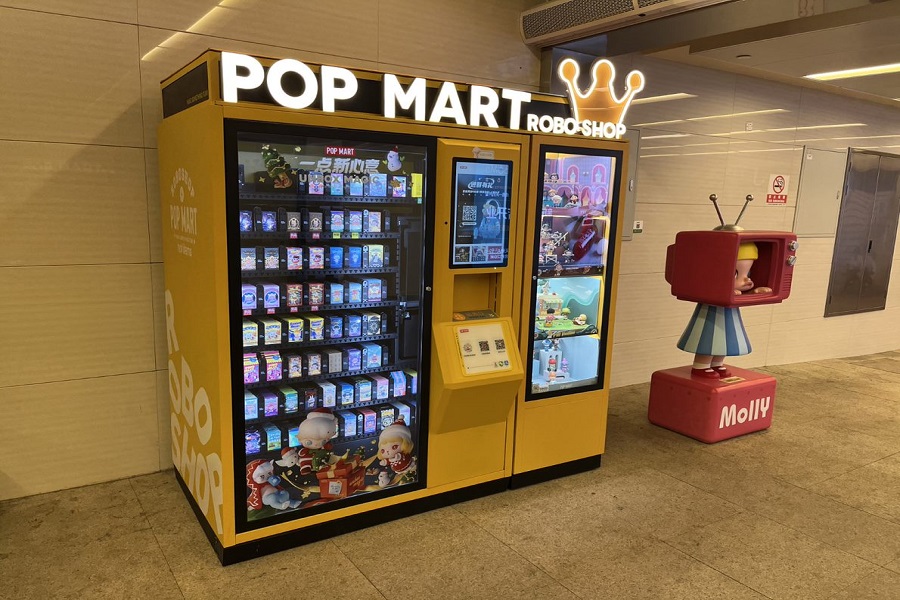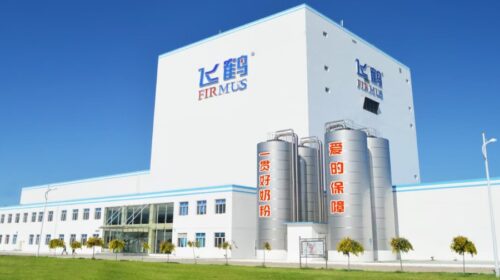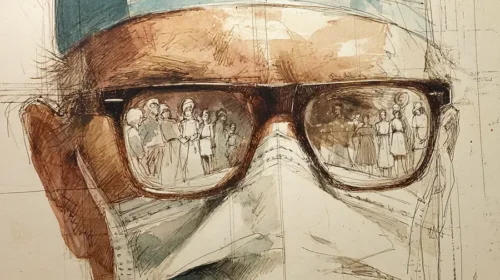Step Right Up: Pop Mart Excites Investors with Foray Into Theme Parks

Collectible toymaker’s shares rise 9% in the week since media reported its plans to open its first entertainment venue in Beijing
Key takeaways:
- Pop Mart is reportedly planning to open its first theme park in Beijing as it looks to jumpstart its slowing growth
- Maker of popular collectible toys is looking to leverage its intellectual property in a China theme park market that was worth 426 billion yuan last year
By Trevor Mo
Pop Mart International Group Ltd. (9992.HK) is preparing to “super-size” its core business, which has found huge success by selling popular “blind box” collectible toys from small shops and vending machines.
More precisely, the Hong Kong-listed company is reportedly preparing to double down on its winning formula with a foray into the theme park business, according to local media reports. The strategy does seem like a logical way for Pop Mart to leverage its huge fan base of young people who could be eager to meet its many popular toy characters in real-life form.
Pop Mart is entering the space through an agreement with the operator of Chaoyang Park in Beijing, multiple Chinese media reported last week. The tie-up will see Pop Mart receive the right to use land for the new theme park, according to the reports.
The company has yet to confirm the reports. But its theme park ambitious are something of an open secret, since a new entity with such business scope was registered under its name last August, according to business information site Aiqicha.
It’s not hard to see why Pop Mart might be eager for a new growth story, based on the performance of its stock over the past year. It was among the best-performing debuts by a Chinese company in Hong Kong in 2020, with its stock more than doubling on its first trading day late that year. Since then, however, the company has been unable to remain that momentum.
The past year saw the stock move to a decidedly downward track, losing half of its value amid sluggish revenue growth. The shares closed at HK$46.30 ($5.94) on Thursday, down by more than half from their peak early last year – though still higher than its IPO price of HK$38.50.
Pop Mart pioneered a new business model in China by selling collectible toys in “blind boxes.” The products are limited-edition toys packaged to keep the contents a surprise until opened. The business is extremely lucrative because people are willing to pay big premiums for the latest trendy toys and figurines. Operating costs are also relatively low because Pop Mart sells its products out of small shops and has also found success with even more cost-effective vending machines.
But the business model, and the general business of selling collectible toys, is also risky due to its heavy reliance on fads. Put simply, it’s difficult to predict the next big consumer trend and develop product lines accordingly.
A key competitive edge Pop Mart likes to tout is its ability to continually develop products based on its propriety intellectual property (IP). In 2020 the company made 350 million yuan ($55 million) from product sales based on its flagship IP “Molly” toys. While the figure looks impressive, it was actually down by about 100 million yuan from a year earlier as the line’s popularity started to fade.
For the first half of 2021, “Molly”-based collectibles were overtaken as Pop Mart’s top-selling products by another character named “Dimoo”, reflecting changing consumer tastes.
Slowing growth
Pop Mart is experimenting with theme parks as its overall growth shows signs of slowing sharply. The company reported revenue of 1.77 billion yuan in the first half of last year, up 116.8%, according to its latest results. While that looks strong at first glance, its revenue in the first half of 2021 was up only 5% when compared with the second half of 2020. By comparison, the company posted annual revenue growth of more than 200% in 2018 and 2019 before the IPO.
To jumpstart its growth, Pop Mart has been laying the groundwork for the theme park move over the past year. That includes several significant strategic investments into companies with business in areas ranging from animation production, to traditional Chinese hanfu costume and exhibition services.
Pop Mart may be eyeing a China theme park market that was worth 426 billion yuan in 2021, according to iMedia Research. That market is expected to continue expanding at a compound annual growth rate of 18% over the next five years, fueled by the nation’s growing middle class with increasing amounts of disposable income to spend on such entertainment.
But building successful theme parks may be easier said than done. For one, unlike making toys, theme park development involves huge investment. A prime example of that is Shanghai Disneyland, which, while hugely successful, required total investment of more than $5.5 billion.
While Pop Mart’s plan is unlikely to cost anything near that figure, the large investment required will almost certainly weight on its finances. At the end of June last year, the company had cash and cash equivalents of 1.5 billion yuan. While that looks relatively strong, it may not be enough to support massive theme park projects, even though most financing for such projects would probably come from loans.
Perhaps more important is the question of whether Pop Mart’s IP library will be strong enough to give its theme parks the extra attraction they need to stand out from the many rival facilities in China, backed not only by foreign names like Disney (DIS.US) but also a wide array of domestic developers.
Theme parks typically feature a mix of attractions like rides and games, as well as other entertainment events like live shows. People lining up to visit Shanghai Disneyland aren’t there to merely find out how cute Mickey Mouse and Donald Duck are. Instead, such characters may simply be a draw to get people to parks.
Once people are there, park operators need to provide compelling experiences – an area where Pop Mart is lacking. Despite rich experience in designing popular toys like “Molly” and “Dimoo,” Pop Mart has far less expertise in creating stories for those characters.
A look at some of the world’s most successful theme park operators shows many followed a similar business model. That typically involves using movie-based material to create popular characters, which can then be used as elements to create attractions or events for theme parks.
At the end of the day, Pop Mart may have to follow such a trajectory if it wants to succeed in the theme park business. It is showing signs of going in that direction with recent moves into the animation business as it tries to give its characters more “mind” and “soul.” Last September it formed a tie-up with a Wuhan-based firm called 2:10 AM Animation, in which the pair agreed to co-develop animation content.
Investors appear to be optimistic about Pop Mart’s theme park plan, with the company’s stock up by 9% over the past week after news of the plan become widely circulated.
In valuation terms, one good comparison for Pop Mart is lifestyle product retailer Miniso (MNSO.US), which recently encroached on Pop Mart’s turf by moving into the toy business. Pop Mart’s price-to-earnings (P/E) ratio currently stands at a lofty 73 based on its profit for 2020. That’s twice Miniso’s P/E of 36 based on the profit for its fiscal year through June 2021. Disney trades at an even higher trailing P/E of 137, while U.S. theme park operator Six Flags (SIX.US) also trades at a high trailing P/E of 77, partly reflecting the difficulties such companies are facing during the pandemic.
Pop Mart’s relatively high P/E compared with Miniso isn’t surprising since it sells product with higher margins than its domestic rival, whose foray into the toy business is still in the early stage. Miniso’s gross margin stood at 32% in 2020, versus a much higher 63% for Pop Mart.
To subscribe to Bamboo Works free weekly newsletter, click here






